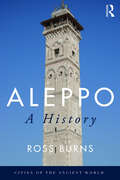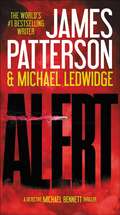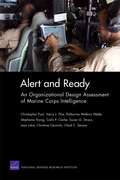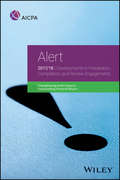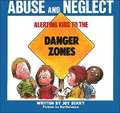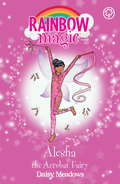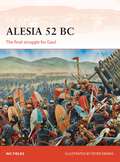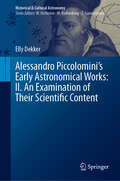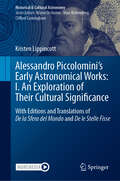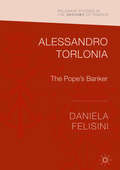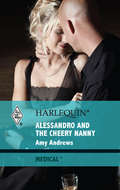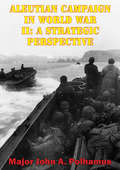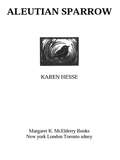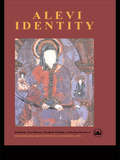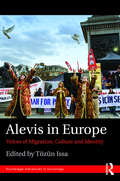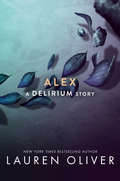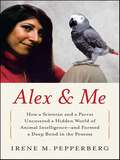- Table View
- List View
Aleph Farms: A New Culture of Meat
by Elie Ofek Jeff HuizingaAleph Farms, an Israeli food-tech start-up, was hoping to play a major role in disrupting the conventional meat sector. Compared to intensive agricultural practices, Aleph's cultured (or lab-grown) meat solution held the promise of considerably reducing greenhouse gas emissions, as well as the use of land and water, while providing a new source of food for a rapidly growing world population. With much of the science already worked out, the company was now facing a host of challenges as it planned to launch its first product-a cultured steak. In particular, Aleph's CEO, Didier Toubia, and his management team had to figure out the best way to position and bring to market its innovative steaks, with a debut expected in late 2022 in Singapore. Management fully recognized potential barriers to consumer adoption and strived to build a relevant brand image. On the production side, the company knew it had to scale quickly and continue to bring down costs so that its steaks approached price parity with conventional meat. Yet given the intensive capital expenditures involved, this was no simple feat. Planning for the longer term, the company was beginning to consider its next product line.
Aleppo: A History (Cities of the Ancient World)
by Ross BurnsAleppo is one of the longest-surviving cities of the ancient and Islamic Middle East. Until recently it enjoyed a thriving urban life—in particular an active traditional suq, whose origins can be traced across many centuries. Its tangle of streets still follow the Hellenistic grid and above it looms the great Citadel, which contains recently-uncovered remains of a Bronze/Iron Age temple complex, suggesting an even earlier role as a ‘high place’ in the Canaanite tradition. In the Arab Middle Ages, Aleppo was a strongpoint of the Islamic resistance to the Crusader presence. Its medieval Citadel is one of the most dramatic examples of a fortified enclosure in the Islamic tradition. In Mamluk and Ottoman times, the city took on a thriving commercial role and provided a base for the first European commercial factories and consulates in the Levant. Its commercial life funded a remarkable building tradition with some hundreds of the 600 or so officially-declared monuments dating from these eras, and its diverse ethnic mixture, with significant Kurdish, Turkish, Christian and Armenian communities provide a richer layering of influences on the city’s life. In this volume, Ross Burns explores the rich history of this important city, from its earliest history through to the modern era, providing a thorough treatment of this fascinating city history, accessible both to scholarly readers as well as to the general public interested in a factual and comprehensive survey of the city’s past.
Alere
by Raffaella Sadun Catherine Slater Channing SpencerThe Board of Alere, Inc, a leading medical diagnostic firm, is evaluating the offer made by Ron Zwanziger, the firm's founder and former CEO, to acquire the company and take it private. The offer arrives at the end of a tumultuous year for the company, which saw Zwanziger fighting and ultimately losing a confrontation with activist investors Coppersmith Capital. How should the board evaluate this offer? Should they reject it, on the basis that Zwanziger's decision to expand into integrated healthcare solutions was the main reason behind the company's poor stock performance, as Coppersmith claimed? Or should they once more place their trust in Zwanziger's leadership, and in Alere's ability to effectively implement his vision?
Alert (Michael Bennett #8)
by James Patterson Michael Ledwidge"This is not a test"--every New Yorker's worst nightmare is about to become a reality. New Yorkers aren't easily intimidated, but someone is doing their best to scare them, badly: why? After two inexplicable high-tech attacks, the city that never sleeps is on edge. Detective Michael Bennett, along with his old pal, the FBI's Emily Parker, have to catch the shadowy criminals who claim responsibility--but they're as good at concealing their identities as they are at wreaking havoc. In the wake of a shocking assassination, Bennett begins to suspect that these mysterious events are just the prelude to the biggest threat of all. Soon he's racing against the clock, and against the most destructive enemy he's faced yet, to save his beloved city--before everyone's worst nightmare becomes a reality.
Alert and Ready: An Organizational Design Assessment of Marine Corps Intelligence
by Christopher Paul Colin P. Clarke Harry J. Thie Stephanie Young Katharine Watkins WebbOver the past decade, especially, U.S. Marine Corps (USMC) intelligence has had to tailor its organization to meet the evolving demands of the operational environment. This has resulted in a number of ad hoc arrangements, practices, and organizations. A broad review of the organizational design of USMC intelligence examined how to align it efficiently and effectively with current and future missions and functions.
Alert: Developments in Preparation, Compilation, and Review Engagements, 2017/18
by AicpaThis annual Alert covers the latest developments in the preparation, compilation and review engagements, including current exposure drafts from Accounting and Review Services Committee (ARSC), and common deficiencies identified during peer reviews. Reviewed by ARSC chair, it also addresses the latest and emerging practice issues, and provides valuable information regarding accounting and reporting developments. Key benefits of this title include: Discussion of two new exposure drafts. Current practice issues in SSARS engagements. Ethics updates. Peer review common findings. Additional SSARS engagement resources
Alerting Kids to the Danger of Abuse and Neglect
by Joy BerryPeople used to believe that children should be kept ignorant for their own sake. In our rapidly changing world, this simply isn't realistic any more. Your children need to know as much as they can about life and its danger zones. Since their imaginations can create fantasies worse than any actual situation, they need correct and comprehensible information. The more children know, the better they will be able to protect themselves should they encounter a dangerous situation. All responsible, caring adults want children to be safe. Unfortunately, our society is becoming increasingly unsafe for children. Young people ware being physically abused and neglected in alarming numbers. Recent statistics estimate that approximately one million cases of abuse and neglect occur in schools, day care centers, camps, baby sitters' homes, and other "safe" places.
Alesha
by Sean SmithAlesha Dixon has one of the most incredible stories of any star, yet she remains an enigma. Behind the fabulous smile and signature laugh is a private woman whose childhood was blighted by domestic violence, poverty and a lack of confidence. As a beautiful young woman, she has struggled to overcome professional failure and the devastating effect of her husband's infidelity. The UK's leading celebrity biographer Sean Smith has travelled to her home town to uncover the truth about her upbringing, her unconditional love for her mother, her loyalty to her extended family, her feud with her elder brother and her unsettled relationship with her Jamaican father, who left home for good when she was four. He discovers a sensitive and secretive woman, who managed to keep her long-term relationship with a member of one of the country's best-known boy bands hidden from public scrutiny. For the first time that love affair can now be revealed. He examines the circumstances that led to the break-up of her marriage to rapper MC Harvey and the effect that unhappy time has had on her life. Alesha describes a roller-coaster career that began when she was 'discovered' at a dance class in Central London. She achieved huge early success with Mis-Teeq, who had seven consecutive top ten hits before their record label went bust. Her subsequent solo career stalled when she was dropped by Polydor before her debut album was even released, but she turned things around with a spectacular victory on Strictly Come Dancing. Sean Smith lays bare her subsequent TV career, including the row over her appointment as a judge on the programme, as well as her triumphant switch to Britain's Got Talent in 2012. Alesha is the dramatic and uplifting account of her journey from a humble start in life and how she overcame all obstacles in her way to become an inspiration to women everywhere.
Alesha the Acrobat Fairy: The Showtime Fairies Book 3 (Rainbow Magic #3)
by Daisy MeadowsGet ready for an exciting fairy adventure with the no. 1 bestselling series for girls aged 5 and up. Jack Frost has stolen the Showtime Fairies' magic stars, which means everyone is losing their special talent! Can Rachel and Kirsty get the stars back before the Tippington Variety Show is ruined? 'These stories are magic; they turn children into readers!' ReadingZone.com Read all seven fairy adventures in the Showtime Fairies set! Madison the Magic Show Fairy; Leah the Theatre Fairy; Alesha the Acrobat Fairy; Darcey the Dance Diva Fairy; Amelia the Singing Fairy; Isla the Ice Star Fairy; Taylor the Talent Show Fairy. If you like Rainbow Magic, check out Daisy Meadows' other series: Magic Animal Friends and Unicorn Magic!
Alesia 52 BC
by Peter Dennis Nic FieldsCaesar's Legions laid siege to Vercingetorix's Gallic army in one of the most tactically amazing battles of all time. Outnumbered 6:1, the Romans built siege lines facing inward and outward and prevented the Gauls from breaking the siege. The campaign leading to the battle revealed ingenuity on both sides, though in the end Caesar established his fame in these actions.In 52 BC, Caesar's continued strategy of annihilation had engendered a spirit of desperation, which detonated into a revolt of Gallic tribes under the leadership of the charismatic, young, Arvernian noble, Vercingetorix. Though the Gallic people shared a common language and culture, forging a coalition amongst the fiercely independent tribes was a virtually impossible feat, and it was a tribute to Vercingetorix's personality and skill.Initially Vercingetorix's strategy was to draw the Romans into pitched battle. Vercingetorix was soundly beaten in the open field battle against Caesar at Noviodunum, followed by the Roman sack of Avaricum. However, the action that followed at Gergovia amounted to the most serious reverse that Caesar faced in the whole of the Gallic War. Vercingetorix began a canny policy of small war and defensive maneuvers, which gravely hampered Caesar's movements by cutting off his supplies. For Caesar it was to be a grim summertime - his whole Gallic enterprise faced liquidation.In the event, by brilliant leadership, force of arms, and occasionally sheer luck, Caesar succeeded. This culminated in the siege of Alesia (north of Dijon), which Caesar himself brilliantly narrates (Bellum Gallicum 7.68-89). With his 80,000 warriors and 1,500 horsemen entrenched atop a mesa at Alesia, the star-crossed Vercingetorix believed Alesia was unassailable. Commanding less than 50,000 legionaries and assorted auxiliaries, Caesar nevertheless began the siege. Vercingetorix then dispatched his cavalry to rally reinforcements from across Gaul, and in turn Caesar constructed a contravallation and circumvallation, a double wall of fortifications around Alesia facing toward and away from the oppidum. When the Gallic relief army arrived, the Romans faced the warriors in Alesia plus an alleged 250,000 warriors and 8,000 horsemen attacking from without. Caesar adroitly employed his interior lines, his fortifications, and the greater training and discipline of his men to offset the Gallic advantage, but after two days of heavy fighting, his army was pressed to the breaking point. On the third day, the Gauls, equipped with fascines, scaling ladders and grappling hooks, captured the northwestern angle of the circumvallation, which formed a crucial point in the Roman siege works. In desperation, Caesar personally led the last of his reserves in a do-or-die counterattack, and when his Germanic horsemen outflanked the Gauls and took them in the rear, the battle decisively turned. The mighty relief army was repulsed.Vercingetorix finally admitted defeat, and the entire force surrendered the next day. Alesia was to be the last significant resistance to Roman will in Gaul. It involved virtually every Gallic tribe in a disastrous defeat, and there were enough captives for each legionary to be awarded one to sell as a slave. In a very real sense Alesia symbolized the extinction of Gallic liberty. Rebellions would come and go, but never again would a Gallic warlord independent of Rome hold sway over the Celts of Gaul.
Alessandro Piccolomini’s Early Astronomical Works: II. An Examination of Their Scientific Content (Historical & Cultural Astronomy)
by Elly DekkerThis book presents the first detailed scientific examination of Alessandro Piccolomini’s two early astronomical works – De la Sfera del Mondo and De le Stelle Fisse. First published in Venice in 1540, the two treatises are amongst the earliest scientific texts written in the vernacular (Italian) and were specifically composed to make astronomical principles and practices available to a lay reader. Whereas De la Sfera del Mondo is essentially an updated adaptation of the theoretical astronomical material contained in Sacrobosco’s De Sphaera, this book examines his views on a number of key topics – such as precession, the motion of the solar apogee and the size and distance of the planets from Earth. The author also presents a radical reassessment of De le Stelle Fisse, focusing on the innovative methods Piccolomini employed to create a viewer-centric approach for identifying the stars. As such, Piccolomini’s guide to the heavens should be seen as a distant forerunner of the successful genre of elementary handbooks that were developed in the late 18th century, and which remain popular with amateur stargazers even in the 21st century. The book also addresses how Piccolomini’s treatises were used by contemporary astronomers by examining the manuscript notes that were left in various surviving copies of his books. It provides a convincing explanation of the unique directional notation on his stellar maps and assesses the relative accuracy of his stellar co-ordinates against contemporary and modern ephemerides and pictorial sources. It also argues that Piccolomini probably designed his distinctive series of maps of the constellations and the related Tables by using a celestial globe to compile his astronomical data. Finally, the author examines the series of refinements and corrections in the successive editions of Piccolomini’s two treatises, thereby showing the extent to which his two early astronomical treatises remained an on-going enterprise for over 60 years. This book is a companion volume to Alessandro Piccolomini’s Early Astronomical Works: I. An Exploration of Their Cultural Significance by Kristen Lippincott in the same series.
Alessandro Piccolomini’s Early Astronomical Works: With Editions and Translations of De la Sfera del Mondo and De le Stelle Fisse (Historical & Cultural Astronomy)
by Kristen LippincottThis book presents the first interdisciplinary study of Alessandro Piccolomini’s two early astronomical works – De la Sfera del Mondo and De le Stelle Fisse. First published in Venice in 1540, the two treatises are amongst the earliest scientific texts written in the vernacular (Italian) and were specifically composed to make astronomical principles and practices available to a lay reader. The book includes modern editions of the original Italian texts and an English translation of both treatises (all appended as Electronic Supplementary Material to the online edition), while also examining the contents of each treatise in depth. It explores the way in which Piccolomini addresses the theoretical underpinnings of the science of astronomy in his De la Sfera del Mondo by providing a version of Sacrobosco’s De sphaera, which he has expanded and updated to include the views of more recent natural philosophers and astronomers. The book also presents an extended study ofDe le Stelle Fisse and the unique method that Piccolomini devised for observing the stars, as well as explanatory notes on the sources behind his explanations of the mythographic sources of each constellation.In addition to this, the book presents a detailed examination of the cultural context in which Piccolomini wrote his treatises, focussing on such issues as how astronomy was taught in Italian universities in the 16th-century; the on-going debates on the viability of Italian as language as a means for discussing scientific ideas; and how Piccolomini navigated through the competitive and complicated world of book production in 16th-century Venice. Given that Piccolomini originally dedicated both treatises to his female friend, the Sienese aristocrat Laudomia Forteguerri, there is also a discussion of the mysteries behind their personal relationship; of the dynamics of Sienese society at the time; and, in particular, the role that the Sienese Accademia degli Intronati played in Piccolomini’s own intellectual development and the composition of his astronomical treatises.This book is a companion volume to Alessandro Piccolomini’s Early Astronomical Works: II. An Examination of Their Scientific Content by Elly Dekker in the same series.
Alessandro Torlonia: The Pope’s Banker (Palgrave Studies in the History of Finance)
by Daniela FelisiniThis book provides a vivid biography of a towering Italian banker, pioneer and entrepreneur. It weaves the entrepreneurial ventures of Alessandro Torlonia (1800-1886) through the narratives of business and politics in the Nineteenth century, the growth of European financial markets and the decline of Papal power during the Italian Risorgimento. The discussion is founded in rigorous historical research using original sources such as the Archivum Secretum Vaticanum papers and other official documents; the archives of the Torlonia family, and of the Rothschild bank in Paris; memoirs; correspondences, and newspapers. Through this book readers learn that Alessandro Torlonia was a man of many faces, who was one of the most complex and influential characters of Italian economic life in the nineteenth century. Felisini also provides an expert critique of the financial history of the papacy: an area of heightened interest given the notoriety of relations between the Holy See and its bankers in the twentieth and twenty-first centuries. Focal topics such as the history of European elites and the history of European financial markets will have an interdisciplinary appeal for scholars and researchers.
Alessandro and the Cheery Nanny
by Amy AndrewsHigh-flying surgeon meets a real-life Mary Poppins! Italian surgeon Alessandro Lombardi had it all- distinguished career, newborn heir, beautiful wife. But that life is gone forever now, and he and his little boy have come to Australia to start over. Things start looking up when bubbly nanny and ER nurse Natalie Davies and her mischievous kitten move in! They put the smile back on his son's sad face, and Natalie ignites a flame in Alessandro's deeply guarded heart. Nat hides her own heartache behind her twinkling eyes, but she's already fallen for Alessandro's little boy, and she knows she's in danger of tripping head over heels for a man who has sworn never to love again...
Alessandro's Prize
by Helen BianchinA self-made businessman gets a second chance with his crush when she comes to Italy to nurse a broken heart in this romance by a USA Today bestseller. A vacation in Milan sounds ideal to Lily Parisi. Her world was rocked to its core when she found her fiancé cheating on her, but now she is determined to get on with her life—on her own! But not for long . . . She bumps into someone she knows—Alessandro del Marco—and her plans come a little undone . . . Darkly, smolderingly enigmatic, Alessandro has long wanted Lily but never pursued her. He’s always kept his cool. However, now that Lily—the prize he’s always wanted—is in his reach, he’s finding it impossible to keep control . . . The time has come to stake his claim—especially since the passionate chemistry appears to be mutual!
Alessi: Evolution of an Italian Design Factory (A)
by Youngme MoonAlessio Alessi, head of distribution at family-run Alessi S.p.A., is facing price and brand confusion among customers and is considering reorganizing Alessi's worldwide network of distributors. By describing the challenges facing Alessi, an internationally acclaimed design and manufacturing company of household objects for the table and kitchen, the case examines consumer marketing and distribution in general, as applied in the niche market of highly designed household goods for an Italian design factory. Includes color exhibits.
Aleutian Campaign In World War II: A Strategic Perspective
by Major John A. PolhamusThis work is a detailed historical study of the Second World War's little known Aleutian Campaign in the North Pacific, commonly referred to as the "Forgotten War." After describing the events that transpired in the North Pacific throughout the war, this work focuses on the strategic reasons why the United States and Japan decided to dedicate critical and limited resources to a secondary effort in the North Pacific. The strategies are compared to determine which country dedicated a higher percentage of available manpower and resources to the region and which country gained an advantage from their respective propaganda efforts. Despite the United States' tactical and operational victories in the North Pacific, the Japanese benefited at the strategic level. Secondary theaters of operations, like the Aleutians during World War II, produced many lessons that were applied to other theaters during the war and remain relevant today in the Global War on Terrorism.
Aleutian Sparrow
by Karen Hesse Evon Zerbetz"Your work, Vera," Alfred's grandfather told me, "your work is to know the ways of our people." In June of 1942, seven months after attacking Pearl Harbor, the Japanese navy invaded Alaska's Aleutian Islands. For nine thousand years the Aleut people had lived and thrived on these treeless, windswept lands. Within days of the first attack, the entire native population living west of Unimak Island was gathered up and evacuated to relocation centers in the dense forests of Alaska's Southeast. With resilience, compassion, and humor the Aleuts responded to the sorrows of upheaval and dislocation. This is Vera's story, but it is woven from the same fabric as the stories of displaced peoples throughout history. It chronicles the struggle to survive and to keep community and heritage intact despite harsh conditions in an alien environment. In a luminous novel of unrhymed verse, Newbery winner Karen Hesse brings to light this little-known episode from America's past.
Alevi Identity: Cultural, Religious and Social Perspectives
by Catharina Raudvere Tord Olsson Elisabeth OzdalgaIn the rising momentum for new and reformulated cultural identities, the Turkish Alevi have also emerged on the scene, demanding due recognition. In this process a number of dramatic events have served as important milestones: the clashes between Sunni and Alevi in Kahramanmaras in 1979 and Corum in 1980, the incendiarism in Sivas in 1992, and the riots in Istanbul (Gaziosmanpasa) in 1995. Less evocative, but in the long run more significant, has been the rising interest in Alevi folklore and religious practices. Questions have also arisen as to what this branch of Islamic heterodoxy represents in terms of old and new identities. In this book, these questions are addressed by some of the most prominent scholars in the field.
Alevis in Europe: Voices of Migration, Culture and Identity (Routledge Advances in Sociology)
by Tözün IssaThe Alevis are a significant minority in Turkey, and now also in the countries of Western Europe. Over the past century, many of them have migrated from rural enclaves on the Anatolian plateau to the great cities of Istanbul and Ankara, and from there to the countries of the European Union. This book asks who are they? How do they construct their identities – now and in the past; in Turkey and in Europe? A range of scholars, writing from sociological, historical, socio-psychological and political perspectives, present analysis and research that shows the Alevi communities grouping and regrouping, defining and redefining – sometimes as an ethnic minority, sometimes as religious groups, sometimes around a political philosophy - contingently responding to circumstances of the Turkish Republic’s political position and to the immigration policies of Western Europe. Contributors consider Alevi roots and cultural practices in their villages of origin; the changes in identity following the migration to the gecekondu shanty towns surrounding the cities of Turkey; the changes consequent on their second diaspora to Germany, the UK, Sweden and other European countries; and the implications of European citizenship for their identity. This collection offers a new and significant contribution to the study of migration and minorities in the wider European context.
Alex
by Dianne HartsockAlex is twenty and confused. He always is. The world presses on him with its horrors and pain, with scintillating auras that bewilder his eyes and drive the migraines deeper. He hears the cries of the children, sees the brutal images of tortured victims. He feels out of control and his mind slips ...Severely abused as a child, he is left with horrible scars on his body and even worse scars within his mind. Even though it puts him in danger, he’s compelled to help those who call to him. He’s driven, motivated by his visions to rescue them and hopefully uncover the killer. When he can, he helps the police; yet some detectives suspect he’s involved. Often, Alex finds himself alone and afraid in a world he doesn’t always understand.
Alex
by Frank Wynne Pierre LemaitreUpon winning the prestigious 2013 Crime Writers Association International Dagger Award, the judges praised Alex by saying, "An original and absorbing ability to leash incredulity in the name of the fictional contract between author and reader . . . A police procedural, a thriller against time, a race between hunted and hunter, and a whydunnit, written from multiple points of view that explore several apparently parallel stories which finally meet." Alex Prévost--kidnapped, savagely beaten, suspended from the ceiling of an abandoned warehouse in a tiny wooden cage--is running out of time. Her abductor appears to want only to watch her die. Will hunger, thirst, or the rats get her first? Apart from a shaky eyewitness report of the abduction, Police Commandant Camille Verhoeven has nothing to go on: no suspect, no leads, and no family or friends anxious to find a missing loved one. The diminutive and brilliant detective knows from bitter experience the urgency of finding the missing woman as quickly as possible--but first he must understand more about her. As he uncovers the details of the young woman's singular history, Camille is forced to acknowledge that the person he seeks is no ordinary victim. She is beautiful, yes, but also extremely tough and resourceful. Before long, saving Alex's life will be the least of Commandant Verhoeven's considerable challenges.
Alex
by Lauren OliverThis captivating digital original story set in the world of Lauren Oliver's New York Times bestselling Delirium series focuses on Alex, Lena's first love. When Alex sacrificed himself to save Lena, he thought he was committing himself to certain death, but what he got was almost worse. Imprisoned and tortured by the guards, his mind forces him to relive a past he would rather forget. But in the dark he grows stronger. Both hopeful and terrified, he fights to find his way back to her and the love he still clings to. In this digital story that will appeal to fans of Delirium and welcome new admirers to its world, readers will learn of Alex's time after the events of Delirium, as well as the dark past that he has tried to forget.
Alex & Me: How a Scientist and a Parrot Discovered a Hidden World of Animal Intelligence—and Formed a Deep Bond in the Process
by Irene M. PepperbergNew York Times BestsellerThe remarkable true story of an extraordinary relationship between psychologist Irene M. Pepperberg and Alex, an African Grey parrot who proved scientists and accepted wisdom wrong by demonstrating an astonishing ability to communicate and understand complex ideas. "You be good. I love you," were Alex's final words to his owner, research scientist Irene Pepperberg, before his premature death at age thirty-one on September 6, 2007. An African Grey parrot, Alex had a brain the size of a shelled walnut, yet he could add, sound out words, understand concepts like bigger, smaller, more, fewer, and none, and he disproved the widely accepted idea that birds possess no potential for language or anything remotely comparable to human intelligence.Alex & Me is the incredible story of an amazing, irascible parrot and his best friend who stayed together through thick and thin for thirty years—the astonishing, moving, and unforgettable story of a landmark scientific achievement and a beautiful relationship.
Alex (Girls Like You Ser. #6)
by Kate PettySand, sea and holiday romance are in store for four friends one summer.Alex finds herself getting distracted playing mixed double in a tennis tournament.

